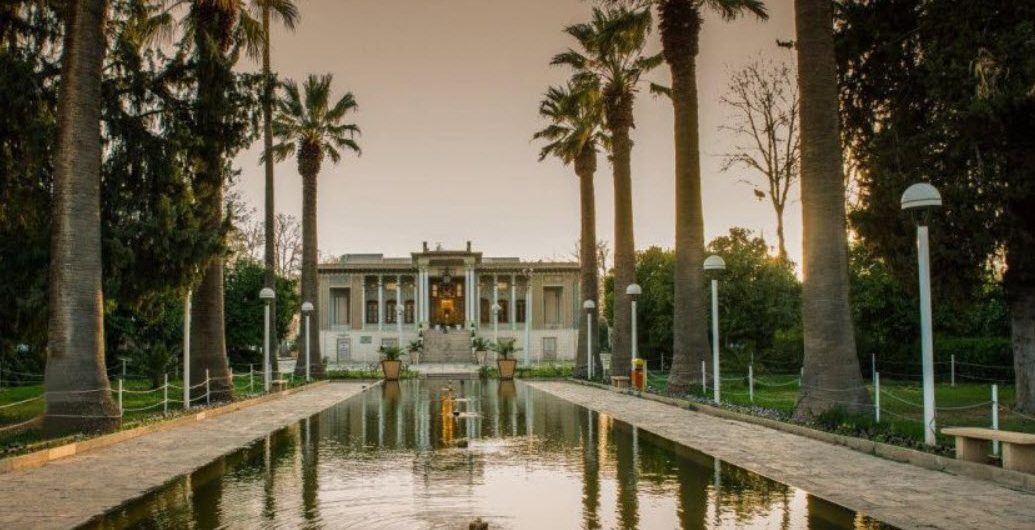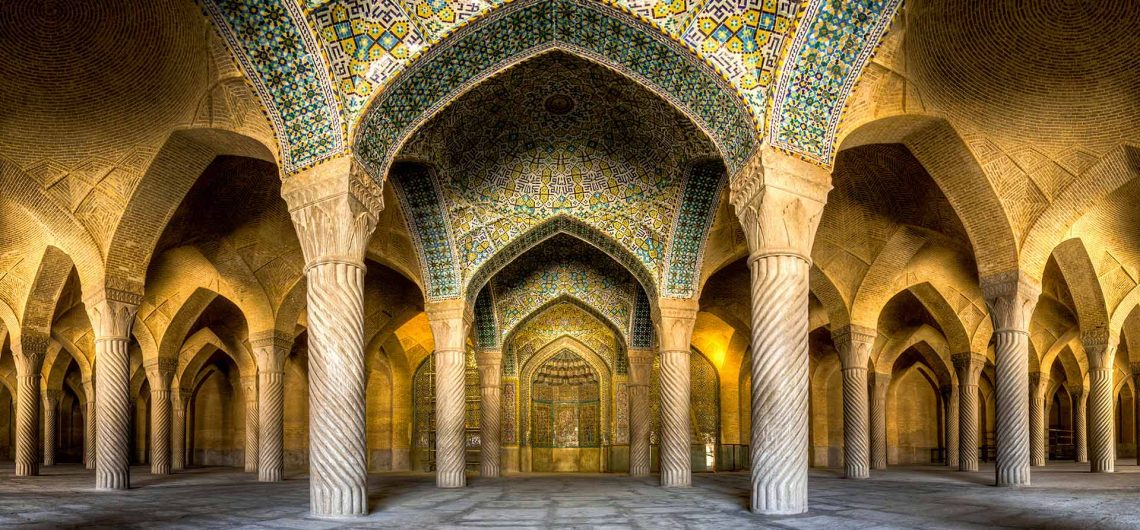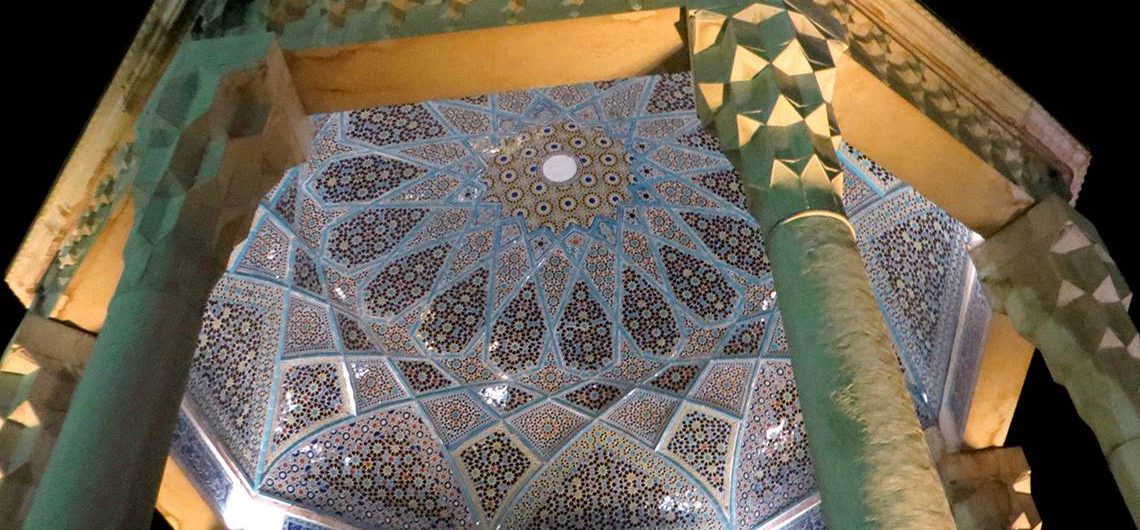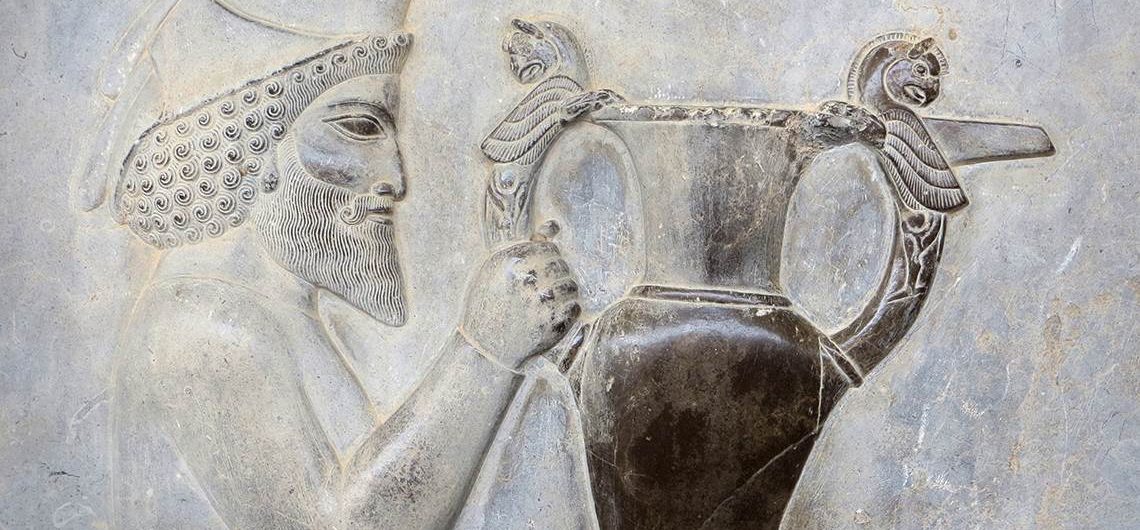Located in the Afif-Abad Street of the city of Shiraz –known as the City of Roses and Nightingales–, the Afif-Abad Garden is a favorite place for both locals and international travelers to visit. Initially called the “Golshan Garden,” the Afif-Abad Garden is among the top tourist destinations in Shiraz which is the host to thousands of guest each year.
Like any other Persian gardens, it is composed of a royal mansion and pools surrounded by hundreds of towering trees and colorful flowers. On the other hand, the museums in the two-story palace, the bathhouse, and a traditional tea house confirm the history of the place and the city more than other features. The building of the garden dates back to the Safavid era, and its architecture is a mixture of the elements of the Achaemenid, Sassanid, and Qajar eras. The tile works and the stone columns similar to the Persepolis’s style have ornamented the royal mansion. Being embellished by the eye-catching colorful flowers and the vases in all parts, this garden is the shining example of the Iranian floriculture. If you are a follower of art, architecture, history, and beauty do not miss this alluring garden.
After passing through a wooden gate which is the entrance to the garden, you reach a corridor around a small pool which is decorated with the vases full of roses and is surrounded by the towering cypress trees. In front of the pool, the royal mansion in two floors, and with several stone columns, is beautifully decorated with blue tile works and exhilarates anyone to delve into the palace to find new exciting things in it.
The first floor of the palace is the museum of weapons including the cold and warm arms and is called the military museum. Among the weapons being showcased in the museum, the extravagant personal guns belonged to Qajar and Pahlavi kings are the standouts. This floor leads to the second floor through the stairs. The second floor is called the Ebrat museum which is composed of several chambers and is furnished with stunning pieces of furniture.
The Iranian carpets, the private piano of Queen Farah Pahlavi are the other impressive things that make the museum more noteworthy. At the center of this floor, a hall decorated with a chandelier and marble fireplaces is located. Being ornamented with paintings of flowers and plants, the wooden ceiling captivates any visitor. Along both sides of the hall, the luxury rooms such as a sitting room, a study room, a conference room, and a casino are located. However, visitors cannot enter the rooms.
Moreover, when the sun shines through the colorful glass windows of the hall, the beauty of the mansion is boosted. The porches on both sides of the palace are majestically decorated with the paintings of the hunting preserves and the battles between groups of people. In front of the royal mansion, there is a big pool laden with crystal clear water which reflects the façade of the palace. Ducks and geese inside the pool have given another life to the garden.
The attractions of the Afif-Abad Garden is not limited to a mansion, pools and green plants, but preferably there are a traditional tea house and a bathhouse in other parts of the complex. The tea house contains six chambers decorated with fabulous illustrations from Shahnameh including the battle between Rostam and Sohrab, and Rostam and Esfandiar. The Bathhouse of the complex is located next to the tea house which is well worth visiting.
The beautiful singing of the nightingales gratifies any visitor when walking around the garden. If you are interested in taking pictures, do not forget to rent the traditional Qajari costumes, wear them, and then record your memories in the garden. On the whole, pay a visit to this fabulous garden to get more familiar with the history of Shiraz and the beauty of Iranian garden.
Address: Afif Abad Street, 71364 Shiraz, Iran
Opening Hours: Every day from 08:00 to 12:00 and from 15:30 to 17:00
Closed: Official Holidays
Ticket Price: 20,000 Toman




